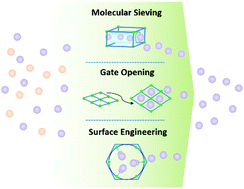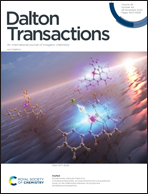Optimizing supramolecular interactions in metal–organic frameworks for C2 separation
Abstract
C2 separation is of great importance in the petrochemical industry. Traditionally, it is performed by distillation at cryogenic temperatures, which necessitates the consumption of a huge amount of energy to operate the refrigeration system in the production process. In this regard, it is imperative to seek alternative separation methods with high efficiency and low energy cost. Although of recent origin, metal–organic frameworks (MOFs) have already been extensively studied as advanced adsorbents in many applications, and significant progress has been made particularly in gas separation owing to their unprecedented porosity and tunable structures. In this review, we extrapolated three most frequently invoked design strategies for efficient C2 separation hinged upon supramolecular interactions, including molecular sieving, gate opening, and surface engineering. Recent progress of MOF materials in C2 separation was highlighted within each of these strategies, and their advantages and limitations are compared and discussed. Accordingly, we provide perspectives on current challenges and future emphases in designing MOF materials for hydrocarbon separation. With our continued efforts in this area, we expect that integrating supramolecular interactions in a single MOF system is a viable approach to achieve a balance between adsorption capacity and selectivity for different hydrocarbon separation scenarios.

- This article is part of the themed collection: 2020 Frontier and Perspective articles


 Please wait while we load your content...
Please wait while we load your content...